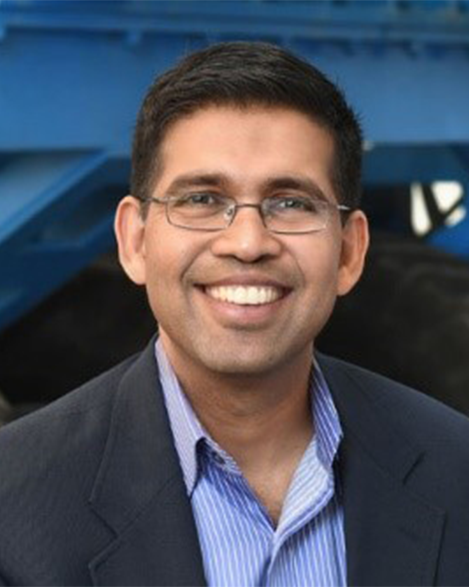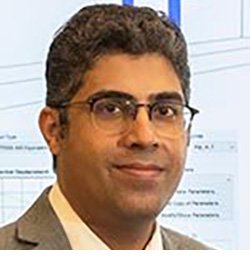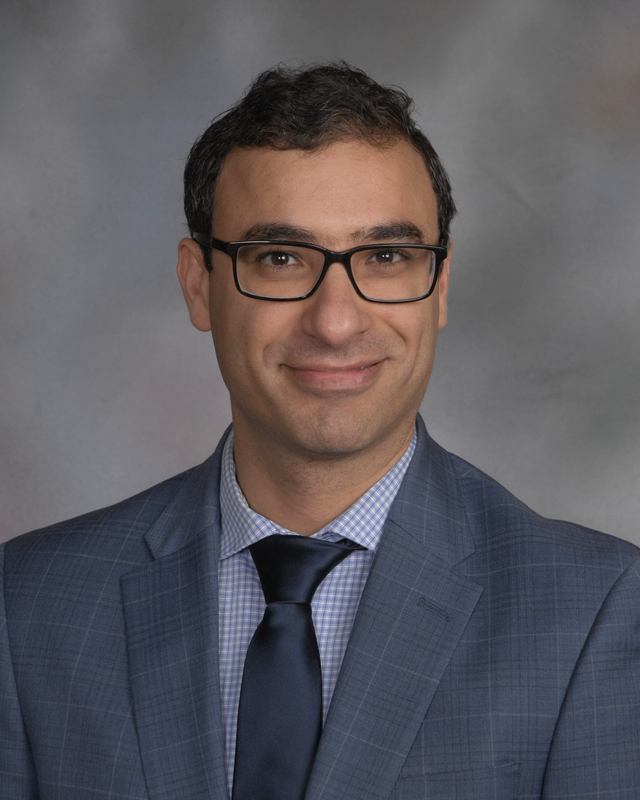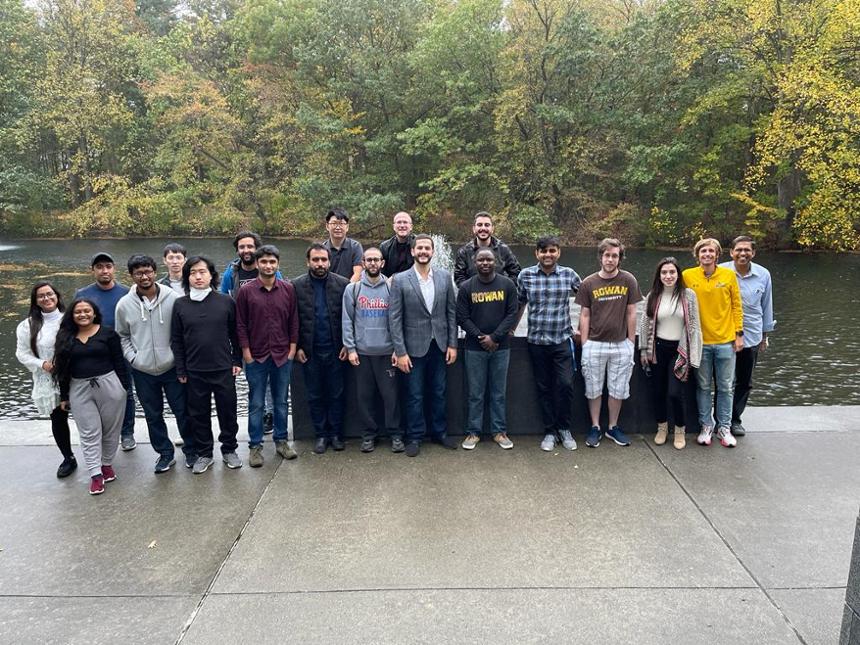GOSTAR Projects
GOSTAR Projects
GOSTARS Projects
Participating faculty will offer exciting research projects under the identified critical areas of the nation's infrastructure needs. The projects are listed below:

Interaction and fracture of ultra-high performance concrete and high strength concrete composites (Dr. Gilson Lomboy)
In this project, fracture models for UHPC-HPC composites under different loading and bonding conditions will be studied. The models will consider stress and strain limits, fracture energy, stress intensity factors, and stress-crack width relationships. The models will be derived from physical experiments of tension, bending, and shear of composite specimens. Understanding the limit states of the composite will allow the analysis of failure modes of structures. This gives way to a better stress resistance for structures when subjected to loads and the least damage should structure sustain excessive loads. Read More

Energy Harvesting from Pavements (Yusuf Mehta, Ph.D., P.E.)
This project will revolve around identifying the state-of-the-art energy harvesting (i.e., Solar energy, piezoelectric energy harvesting, geothermal energy using Heatpipe) from pavements and their limitations and performing feasibility study concerning local (New Jersey) traffic and environmental conditions. Various laboratory tests and mathematical simulations will be performed to fully understand the feasibility of potential harvesting technologies in NJ and their limitations in the first phase. Read More

UAV-Based Assessment of Geotechnical Infrastructure under Climate Influences (Cheng Zhu, Ph.D., P.E.)
This project aims to integrate unmanned aerial vehicle (UAV) and novel image processing techniques to perform a reliable assessment of geotechnical infrastructure for the improved understanding of soil-atmosphere interactions. UAV-based photogrammetry will be conducted to generate the high-resolution 3D elevation model of levees and slopes in New Jersey. Novel image data processing techniques will be developed to support the fast and reliable generation of the 3D model. Read More

Professional Identify Formation within Transportation Doctoral Programs (Kaitlin Mallouk, Ph.D.)
As we strive towards the goal of recruiting and retaining a diverse population of transportation engineering professionals, it is essential to understand how CEE doctoral students develop their professional identity. This study seeks to determine how the GAANN activities including coursework, co-curricular activities, and doctoral program components relate to students’ beliefs of knowledge and skillsets that will be necessary for a broad array of positions within the transportation industry. Read More

Topology Optimization and Additive Construction toward Sustainable, NetZero Carbon Infrastructures(Islam M. Mantawy, Ph.D., PE)
For decades, concrete structures are constructed using cementitious based materials using conventional methods through formworks (either cast-in-place or precast). Concrete with sufficient slump is needed to fill up the formworks. This approach results in significant material wastage (where the material is placed at areas with low to very low stresses) and increases carbon footprint. Read More

Reliability-Based Resilience Indicator for Transportation System Subjected to the Seismic Event (Seyed Hooman Ghasemi, Ph.D.)
The highway transportation systems compound roads, pavements, bridges, culverts, tunnels, rail, aviation, ferries, and other assets are highly vulnerable in case of the occurrence of the natural disruption. In fact, the resilience-based assessment is a probability/reliability-based framework that can be defined as structural/infrastructural ability to experience less damage and recover more quickly from disruption events. Read More

Understanding Motor Vehicle Injury among Older Adults Using Linked Data (Dr. Mohammad Jalayer)
According to the New Jersey Division of Highway Traffic Safety, older drivers represent the largest contingent of motorists involved in crashes. It should be noted that older adults’ motor vehicle crashes need more resources such as additional diagnostic imaging and increased odds of admission. With this increasing number of older adults, motor vehicle injuries and fatalities have become a major public health issue for adults in this respective group, necessitating further research and development. Read More

Machine Learning Based Structural Health Prediction for Infrastructure Systems from Global to Local Structural Responses(Islam M. Mantawy, Ph.D., PE)
Resilience is often defined as the ability to prepare and plan for, absorb, recover from, and more successfully adapt to adverse events. Resilience is assessed using 4R-Methodology including robustness, rapidity, redundancy, and resourcefulness. Read More

Motivation towards Doctoral Degree Completion (Cheryl Bodnar, Ph.D.)
As we strive towards the goal of recruiting and retaining a diverse population of transportation engineering professionals, it is essential to understand what motivates CEE students to continue to persist towards degree completion. This study will leverage Expectancy Value Theory (EVT) to determine the relationships between individual beliefs and students’ capabilities associated with tasks that they are undertaking as part of their degree. Read More

Identifying Distracted Driving Events using Artificial Intelligence Techniques (Dr. Mohammad Jalayer)
According to National Highway Traffic Safety Administration, nationwide in 2019, distracted driving was one of the top five factors contributing to fatal motor vehicle crashes. Each year, thousands of people lose their lives in crashes resulting from distracted driving in the United States, necessitating further research and development. Read More

Development of Self-Powered, Durable Aggregate Particles for Condition Monitoring and Traffic Counting on Roadways (Yusuf Mehta, Ph.D., P.E.)
The pavement industry relies heavily on pavement condition data when making decisions to allocate available resources. Having accurate data is substantial to cost-effectively allocate resources and prioritize construction, rehabilitation, and preservation pavement projects. Currently, agencies collect pavement condition data on yearly basis. Read More
Bridge Modal Characterization Through the Use of Remote Sensors. (Adriana Trias-Blanco, Ph.D.)
Current approaches for the modal characterization of bridges is done by the implementation of accelerometers, which are contact sensors capable of measuring the acceleration of the structure at each point of contact. The information gathered from the accelerometers provides sufficient data to allow the recognition of the different mode shapes of the structure. This approach is used to calibrate the finite element model of the bride which is further used for structural evaluations. Read More

Bio-mediated Soil Improvement Technique for the Protection of Coastal Roadways (Cheng Zhu, Ph.D., P.E.)
Sand erosion under natural environment changes or human activities is a major concern to many coastal zones, imposing significant risk for the integrity of coastal infrastructure. This research aims to develop novel bio-mediated techniques to improve soil strength and reduce its susceptibility to erosion. Laboratory scale experiments will be designed and carried out to optimize the developed technique and validate its effectiveness in soil improvement under natural environmental conditions. Read More


